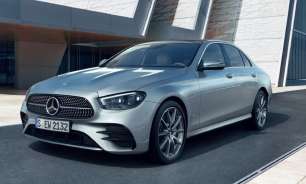The first impression inside is that of space, despite the falling roofline and coupe-like upsweep of the side windows and you look back. While, again, similar to a 911s, a kink at the door gives the GT a unique character.
Even larger people will appreciate the generous amounts of room up front, with space to stretch, sat in sumptuously comfy bucket seats. Note that the standard ones are better than the racier but firmer Sports versions.
The driving position is perfect, ahead of a dashboard that is very typical modern Mercedes in appearance and layout.
To that end, the tablet-style integrated touchscreen (11.9 inches) is clear, fast and intuitive once time is taken to learn it. And points are also won for the multi-configurable electronic instrumentation, that allows for a variety of screens, including track, classic and minimalist views.
The trademark turbine air vents, the quite beautiful material and trim finishes and just the general solid feel are further typical contemporary Mercedes cabin treatments, as are the excellent ventilation and ample storage options.
And while rear vision isn't great, that's what cameras are for. It's all pretty much on brand.
It is a shame, given how elevated the Mercedes-AMG engineering is underneath, that the GT’s interior look and ambience is so similar to those of a (albeit higher-spec) C-Class or GLE. It's simply not as special as some of the company’s previous sports cars.
More annoyingly, the ride is too firm and bumpy for a GT, and this has the unhappy effect of provoking random rattly trim sounds within the cabin. It’s a bit like scrunched-up cellophane. In a $420K (as tested) Merc, that’s very disappointing, especially as it can be heard over the copious amount of road and tyre noise droning through, particularly on coarser bitumen surfaces.
Further back, the rear seat is strictly two-plus-two, and nobody over 150cm tall is recommended to travel there by Mercedes itself. That sloping roofline is the culprit. That said, brief trips with a bowed head are possible, as the fixed cushions and split-folding backrests are actually surprisingly comfy. But only for short journeys. Kids should love it though, and the second row does open up the GT’s usefulness enormously.
As does a near-doubling of the AMG’s cargo capacity, jumping 146 litres to 321L with backrests erect, to a whopping 675L (+325L) in two-seater mode. The flat floor is accessed via a large electrically-operated liftback door, offering quite a large aperture for easy loading/unloading.
Having no spare wheel helps here, with a tyre inflation kit included in lieu of that.
Meanwhile, at the front, under the bonnet, things have definitely changed for the better as well.


















































